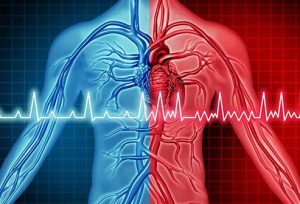
Atrial fibrillation is one of the few types that present in the heart disease group under the category of arrhythmia. It also can be defined as irregularity of the heartbeat in the atrium (one of the heart’s chambers). This condition is usually related to other heart health issues and often presented as a symptom instead of as a disease itself. A study has been done by the National Center for Biotechnology Information to find out about the prevalence of atrial fibrillation and its associated risk factors between the years of 2007 to 2014 in Malaysia. A conclusion was made and it states that:
“The prevalence of AF in the Malaysian population was low at 0.54% compared to the global average of 1%. We found that AF was associated with older age, male sex, hypertension, and ischaemic heart disease”
Types
There are a few types of atrial fibrillation in relation to its onset and duration. Below are the types together with its characteristics:
- Paroxysmal atrial fibrillation: As the name implies, this type of atrial fibrillation does come and go without any factor. Its duration is also not fixed. Patient with paroxysmal atrial fibrillation to get medical treatment to avoid sudden cardiac arrest.
- Persistent: For this type of atrial fibrillation, the patient need to be administered with antiarrhythmic drugs or using electrical cardioversion (a procedure to normalise heartbeat)
- Long-standing persistent: When atrial fibrillation last for more than 12 months
- Permanent: Medications are used to control this type of atrial fibrillation because it can no longer be normalised.
Symptoms
It is important for us to know the symptoms of atrial fibrillation so that we can ask for doctor’s help as soon as possible. But for some people, they do not notice any changes to their health even when they are experiencing atrial fibrillation or they might mistakenly think that those symptoms occur due to their emotional stress as they are almost similar to each other.
- Chest pain
- Sweating
- Fatigue
- Weaknesses
- Palpitations
- Headache
- Anxiety
- Shortness of breath
- Unable to do exercise
- Irritability
Causes
Other than being arrhythmia, there are a few etiological factors that can cause atrial fibrillation. Mostly they are due to the pathological structure of the heart. Normally, the natural pacemaker (sinoatrial node) in the atrium chamber of the heart will start the electrical processes by giving out a signal. This signal will travel across your heart muscles to begin the contraction which will pump the blood throughout the whole body. Any pathology to the structure of the heart will bring changes in the heart rhythm. Some of the reasons for atrial fibrillation includes:
- Acute coronary syndrome
- Myocardial infarction
- Hypertension
- Pulmonary embolism
- Congenital heart diseases
- Thyroid diseases
- Myocarditis
- Rheumatic disease
Risk Factors
People with certain conditions known as risk factors can have a higher risk of developing atrial fibrillation. The risk factors are divided into 2 big groups, which are modifiable and non-modifiable risk factors. The conditions under the modifiable group usually consist of people’s habits which can be changed over time, while non-modifiable risk factors include conditions that can not be controlled and usually are genetically passed over through generations.
Examples of modifiable risk factors:
- Smoking cigarettes
- Alcoholic
- Lack of exercises
- Unbalanced diet
- Emotional stress
- Drug addiction
Examples of non-modifiable risk factors include:
- Age
- Race
- Family history of diseases
- Gender
Treatment
It is important to know the underlying cause for atrial fibrillation in order to treat it properly. The main goals for the treatment are to normalize the heart rhythm, heart rate and also to minimize the risks of having stroke due to blood clotting during atrial fibrillation. The treatment includes medications, electrical cardioversion and certain medical procedures.
Prevention
You can prevent atrial fibrillation by changing your lifestyle. You should stop smoking cigarettes, stop drinking alcohol excessively, eat nutritious diet, exercise for 20-30 minutes 3-4 times in a week and manage your emotional stress accordingly.
It’s advisable to take Covid 19 Vaccine.

